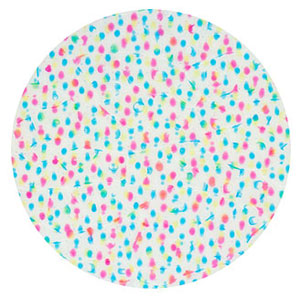 I was lucky to have taken a class in Fraudulent Documents when I was a detective. I found the entire subject riveting (really). Back at my agency, I get requests to examine currency for the officers when they are on counterfeit calls. I try to pass along some basics to the patrolmen, because there are a few shortcuts to identifying real money from fake.
I was lucky to have taken a class in Fraudulent Documents when I was a detective. I found the entire subject riveting (really). Back at my agency, I get requests to examine currency for the officers when they are on counterfeit calls. I try to pass along some basics to the patrolmen, because there are a few shortcuts to identifying real money from fake.
Quick ground school on the Federal Reserve Note: “Paper” currency is made from 75% cotton and 25% linen. To be durable and hard to reproduce, U.S. currency is more cloth than traditional paper, which is made largely from wood cellulose.
The counterfeit pens you see used by stores have an iodine-based ink that reacts with the starch in cellulose-based paper to leave a black marking on a fake bill. The iodine does not react with the cotton/linen blend of real bills, so the pen leaves an amber, yellow, or light brown swipe. Because counterfeiters can coat regular paper with chemicals to block the iodine test of the pens, this is not the best way to check money for legitimacy. Also, bona fide money in circulation can come in contact with starchy materials that will cause the real bills to test black.
The U.S. Department of Treasury’s Bureau of Engraving and Printing starts with special paper made by the Crane & Co. Paper. The cotton/linen paper contains safeguards such as the security threads, blue and red security fibers, and watermarks when the paper arrives at the BEP.
The embedded polyester security thread runs vertically in a U.S. bill. Depending on the series, it will say “USA 5,” “USA Ten,” “USA Twenty,” “USA 50,” or “USA 100” down the length of the thread. The security thread will fluoresce, or glow, under UV light. Fives are blue, Tens are orange, Twenties are green, Fifties are yellow, and Hundreds are light red/pink. Streamlight makes a penlight stylus in the 365 nm UV wavelength that is perfect for checking the security thread. It costs under $20.00.
Blue and red security fibers are seen in valid U.S. currency paper and are randomly scattered on the medium. Good magnification is needed to see them. I have a couple of magnifiers in the 10X to 20X range. A jeweler’s loupe at 20X is a bit strong. I rather like a lens of about 10X to have a better field of view when looking at the money.
Watermarks occur in U.S. currency as pictures roughly matching the main portraits on the bills. They are printed in the lower right corner of the note. Watermarks can only be seen when a bill his held up to the light. If it is visible without back lighting, it can indicate a fake bill.
Let’s move on to the raised printing on a Federal Reserve Note. FRN’s are made by Intaglio (in-tal-EE-oh) printing, where engraved plates are used to impress ink onto the surface of the paper. Because the inked details of intaglio printing are crisp and clean, extremely fine printing called microprinting is used as a security feature in our money. Microprinting is found on various areas of U.S. currency.
When examining a bill under magnification, it is not necessary to know the exact location of microprinting, only that its existence will confirm the authenticity of the bill. In the 2009 series bill shown, the microprinting appears to the naked eye as a straight line above the bottom left border.
Microprinting is too fine to be reproduced by current inkjet printers, the choice of most counterfeiters. Microprinting can also be found on bank checks. Look at the signature line of your personal checks under magnification. The line should say, “Authorized Signature.” Hey, now you can authenticate checks in the field!
We have arrived at the most important thing I can pass along in spotting a counterfeit bill. I said that the counterfeiters’ weapon of choice is the inkjet printer. Color inkjet printers spray the primary colors of cyan, magenta, and yellow on the paper to create images. Because the nozzles are not precision instruments (in this field), overspray occurs. This overspray leaves small dots of the CMY colors on the paper.
An inkjet counterfeited note will show CMY overspray when observed under magnification. Nearly all the fake bills you see will evidence CMY overspray. I think of this as the equivalent of the HGN test in a DUI investigation. When examining currency, I look for the CMY overspray first. If I see it, I immediately know the bill’s fake.
There are a few more security features I could touch upon, but these are the most important ones for the working patrol officer. I suggest getting a magnifying tool and examining as many bad bills as you can on the street to gain experience. You will see a pattern of ragged printing detail and CMY overspray in most fakes. I try to carry at least one $20 bill in my wallet for comparison purposes. I hope these tips make your job easier at your next counterfeit currency call.
Randall




